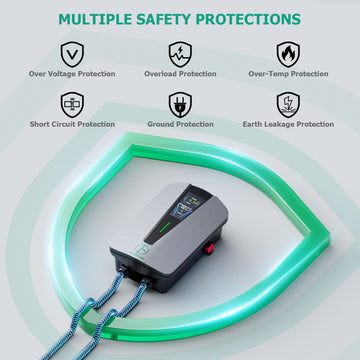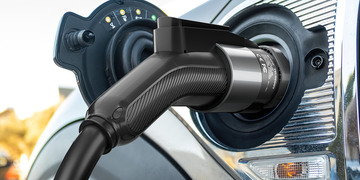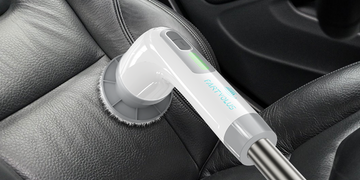What is the difference between Level 2 charging piles and Level 1 charging piles? In the realm of electric vehicles (EVs), understanding the nuances of charging infrastructure is crucial for both seasoned EV enthusiasts and those contemplating the switch to electric mobility. If you've stumbled upon this article in your Google search, you're likely curious about the differences between Level 1 and Level 2 charging piles. Let's unravel the mysteries of these two charging levels and explore how they impact the charging experience for electric vehicle owners.
Level 1 Charging Piles
Level 1 charging is the most basic form of electric vehicle charging and involves a standard household electrical outlet. These charging piles operate on a 120-volt AC supply, commonly found in residential settings. Here are the key characteristics of Level 1 charging piles:
Level 1 charging station charging speed: Level 1 charging operates on a standard household electrical outlet with a 120-volt AC supply. It is the slowest charging option, providing an average charging rate of about 2 to 5 miles of range per hour. This makes Level 1 suitable for overnight charging scenarios or when the vehicle is parked for an extended period.
Use Cases: Level 1 charging is practical for daily commuting and short-distance travel. It is commonly used at home, where the vehicle is parked for several hours, allowing for a gradual and convenient recharge.
Equipment Requirement: Level 1 charging doesn't require any specialized charging equipment beyond a standard electrical outlet. Most electric vehicles come with a Level 1 charging cable, allowing users to plug directly into a household socket.
Level 2 Charging Piles
Level 2 charging represents a significant step up in terms of charging speed and is characterized by dedicated charging stations that operate on a 240-volt AC supply. Here are the key features of Level 2 charging piles:
Level 2 charging station charging speed: Level 2 charging involves dedicated charging stations with a 240-volt AC supply. It offers a significantly faster charging rate compared to Level 1, typically providing around 10 to 60 miles of range per hour. This makes Level 2 charging well-suited for public charging stations, workplaces, and locations where users need a quicker turnaround time.
Use Cases: Level 2 charging is versatile and caters to a broader range of scenarios. It is commonly found in public parking lots, shopping centers, workplaces, and other areas where users may need to charge their vehicles during the day.
Equipment Requirement: Unlike Level 1, Level 2 charging requires dedicated charging equipment. This includes a charging station with a 240-volt power supply and a compatible charging cable. Many electric vehicles are equipped with Level 2 charging capabilities, and users can also install home charging stations for added convenience.
Choosing Between Level 1 and Level 2 Charging
The decision between Level 1 and Level 2 charging depends on individual needs and usage patterns. Level 1 charging is suitable for those who have the flexibility to charge their vehicles overnight at home, while Level 2 charging is ideal for users who require a faster charging experience during the day or at locations away from home.
Telgeoot level 2 charging station

Faster Level 2 EV Charger: Equipped with NEMA 14-50 outlet, EVSE SAE J1772 connector, so it’s compatible with electric vehicles with American standard AC charging interfaces or plug-in hybrid vehicles, including Tesla (Adaptor Needed), Ford, GM, Volkswagen, Nissan, Audi and more.
Smart APP Control: You can search "Smart life" by Apple store or Google Store, Was able to utilize mobile app to set up charging schedule, and allows you to set your cost per KWH so you can see exactly what you are paying to charger.
UL Listed: Charging stations are authorized to display the UL Mark, has been equipped with multiple safety protections, Over Voltage protection, Overload protection, Short Circuit protection, Ground protection, Earth Leakage protection. This charging unit can operate in environments of -30℃ to 55℃ (-22°F to 131°F). The connector operating life is up to 10000 times. The IP65 TYPE 4 waterproof case and solid 20ft cable, make it suitable for indoor and outdoor application.
Fast charge & Adjustable Amperage from: Allows to adjust charging current range from 1 to 48A, level 2 EV 240V 11kw home charger can work 7X faster than a normal Level 1 chargers, Say goodbye to long charging times.
Very easy to connect to Wi-Fi: The ev charger will generate a Wi-Fi signal and use your smartphone to connect it, then you can connect the TELGEOOT ev charger to your home network, view the device status in real-time.Using the app, it is very easy to start and stop charging, adjust the power level, etc.
What is the difference between Level 2 charging piles and Level 1 charging piles?
What is the difference between Level 2 charging piles and Level 1 charging piles? In summary, the difference between Level 1 and Level 2 charging piles lies primarily in charging speed and the associated use cases. While Level 1 provides a convenient and slower charging option for residential settings, Level 2 offers a faster and more versatile solution for public locations and workplaces. Understanding these distinctions empowers electric vehicle owners to make informed decisions about their charging preferences, ultimately contributing to a seamless and efficient electric mobility experience.





